Corona Borealis is a small constellation located in the northern celestial hemisphere. It was one of the first 48 constellations listed by the Greco-Roman astronomer Ptolemy.
Key Facts & Summary
- Corona Borealis is one of the 88 modern constellations, being the 73rd brightest constellation in the sky. It stretches for around 179 square degrees.
- Corona Borealis was listed in the 2nd century Almagest, written by Ptolemy.
- The Latin name “Corona Borealis” translates to the “northern crown” – a name inspired due to its brightest stars that form a semicircular arc.
- The brightest star in Corona Borealis is the white main-sequence star Alphecca.
- Alphecca is an eclipsing binary star system, having an apparent magnitude of 2.23, which varies from 2.21 to 2.32.
- There are no Messier objects in Corona Borealis, and no meteor showers are associated with this constellation.
- Currently, around 5 stars in Corona Borealis have been discovered to host planets.
- There are many important stars in Corona Borealis, such as the rare yellow supergiant-type star, R Coronae Borealis, the blaze star T Coronae Borealis, or the star systems ADS 9731 and Sigma Coronae Borealis, among many others.
- The constellation of Corona Borealis hosts many interesting deep-sky objects as well, such as the Abell 2065 galaxy cluster, the Corona Borealis Supercluster, the NGC 6085, and 6086 spiral and elliptical galaxies, or the Abell 2142, 2061, 2067 and 2162 galaxy clusters, among others.
- The primary stars of Corona Borealis are Alphecca, Nusakan, Theta, Delta, Gamma, Epsilon, and Iota Coronae Borealis
- The best time to observe stars and deep-sky objects in the constellation of Corona Borealis is during the month of July.
- Corona Borealis belongs to the Ursa Major family of constellations.
The constellation of Corona Borealis is associated with the legend of Theseus and the Minotaur in Greek mythology. It was generally considered to represent a crown given by Dionysus to Ariadne, the daughter of Minos of Crete after she had been abandoned by the Athenian prince Theseus.
Corona Borealis translates to “the northern crown” – When Ariadne wore this crown at her marriage to Dionysus, he placed it in the heavens to commemorate their wedding.
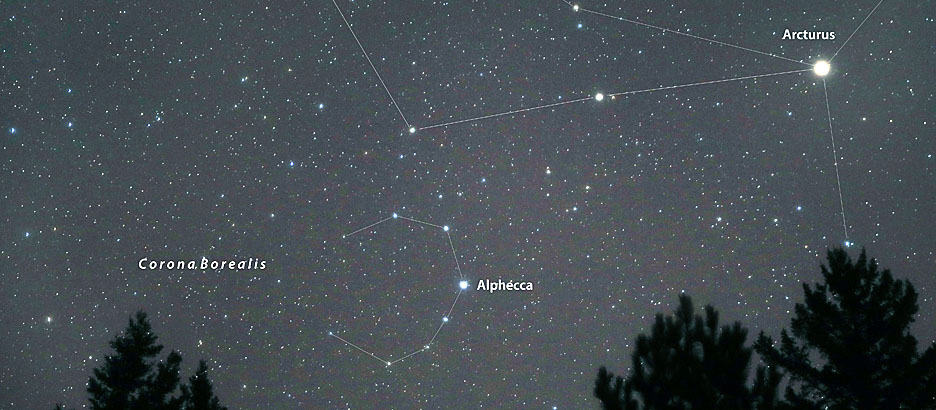
Another version of the tale states that Dionysus gave the crown to Ariadne, who in turn gave it to Theseus after he arrived in Crete to kill the minotaur that the Cretans have demanded tribute from Athens to feed.
Theseus used the crown’s light to escape the labyrinth after killing the minotaur, and Dionysus later sets the crown in the heavens to commemorate this achievement.
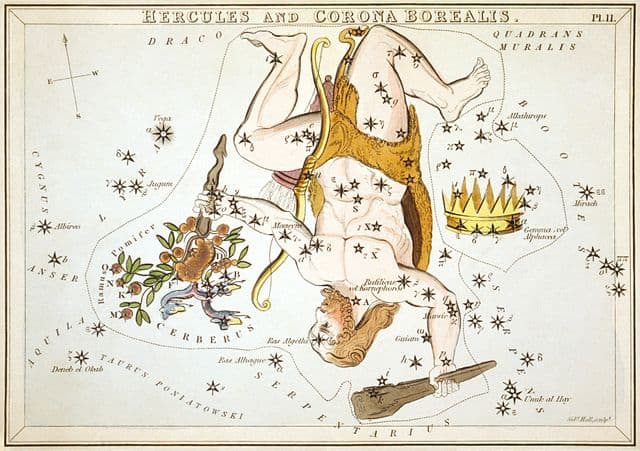
Location
Corona Borealis is the 73rd largest constellation in the sky. It is a small constellation, stretching for around 179 square degrees. Corona Borealis is located in the third quadrant of the northern hemisphere (NQ3) and can be seen at latitudes between +90o and -50o.
- Right Ascension: 15h 16m 03s – 16h 25m 07s
- Declination: 39.7117195o – 25.5380573o
- Visible: between +90o and -50o
- Best viewed: at 21:00 ( 9 p.m. ) during July
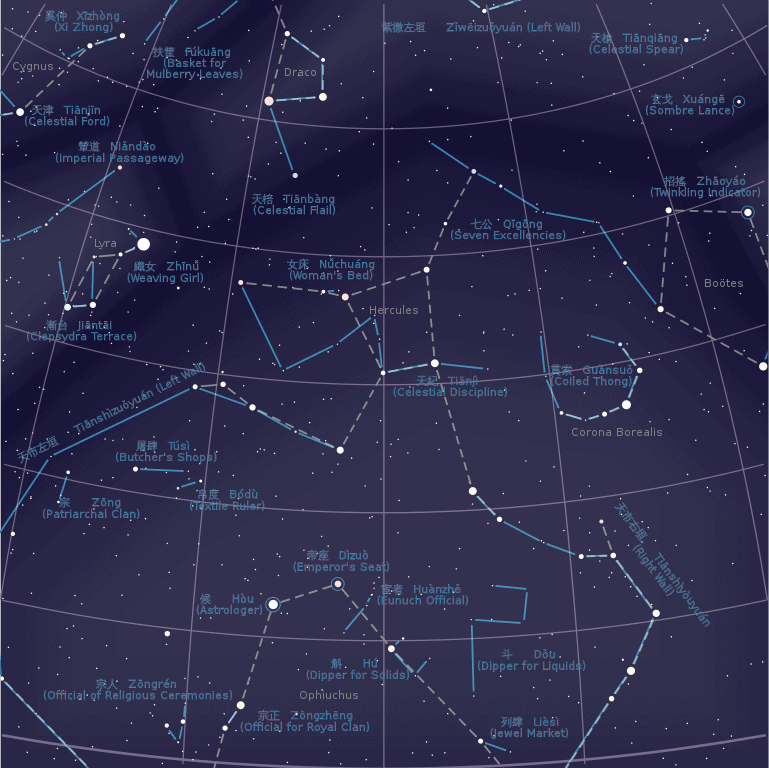
Corona Borealis is surrounded by the constellations of Bootes, Hercules, and Serpens Caput. Corona Borealis belongs to the Ursa Major family of constellations, along with Coma Berenices, Bootes, Camelopardalis, Canes Venatici, Draco, Leo Minor, Lynx, Ursa Major, and Ursa Minor.
Notable Stars
There are many important stars in Corona Borealis, such as the rare yellow supergiant-type star, R Coronae Borealis, the blaze star T Coronae Borealis, or the star systems ADS 9731 and Sigma Coronae Borealis, among many others. The brightest star in Corona Borealis is the white main-sequence star Alphecca.
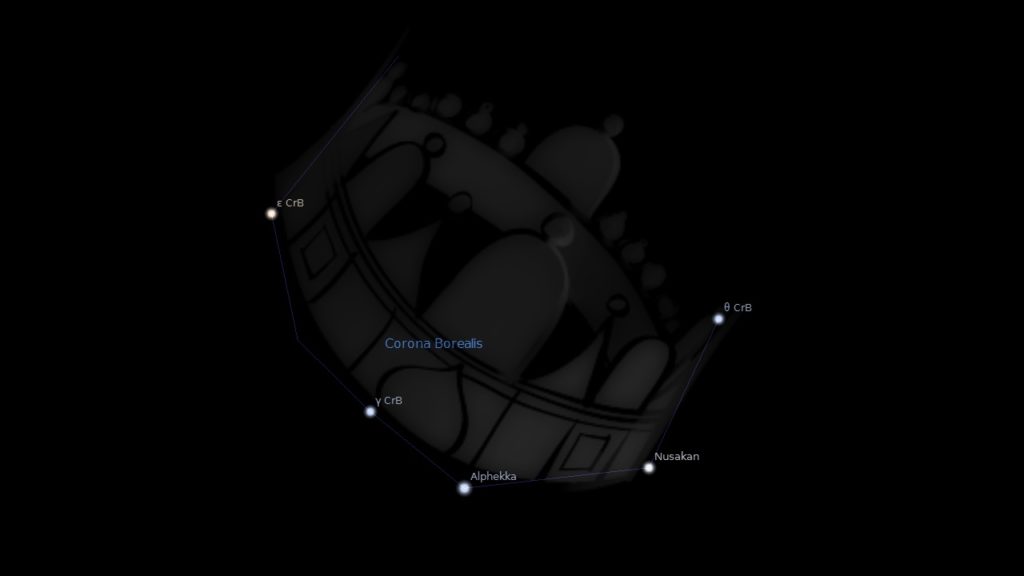
Alphecca is an eclipsing binary star system, having an apparent magnitude of 2.23, which varies from 2.21 to 2.32. Currently, around 5 stars in Corona Borealis have been discovered to host planets. The seventh brightest stars in Corona Borealis are Alphecca, Nusakan, Gamma-Theta-Delta-Iota, and Epsilon Coronae Borealis.
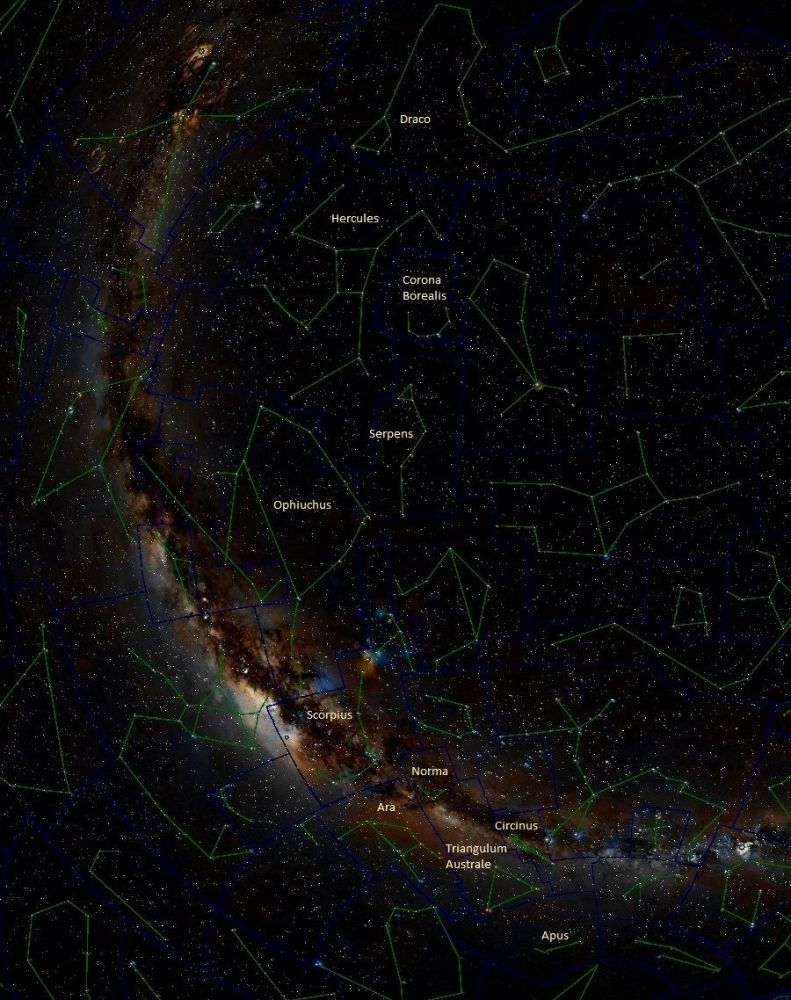
Alphecca
Alphecca, designated as Alpha Coronae Borealis, is the brightest star in its constellation. It is the 67th brightest star in the night sky, and it is composed out of two main-sequence stars, located at around 75 light-years away from us.
The primary star, Alphecca A, is a white main-sequence star, while B, is a yellowish main-sequence star. The apparent magnitude of this system is 2.23 however, the stars eclipse each other and this results in brightness variations that range from magnitude 2.21 to 2.32.
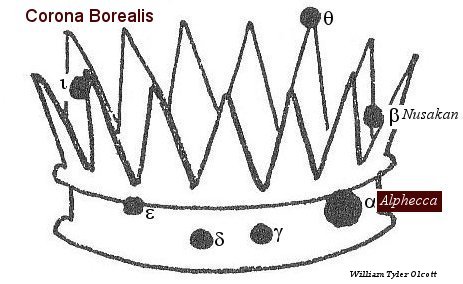
The primary star, Alphecca A, is enveloped by a circumstellar disk of gas and dust, similar to the one enveloping the star Vega. Alphecca bore many names, such as Alphecca Gemma, Gnosia, and Asteroth.
The traditional name Alphecca remained the star’s most favorable name established by the WGSN. The traditional name, Alphecca Gemma, comes from Arabic and translates to “the bright star of the broken ring of stars” – referring to the constellation’s shape and Alphecca’s position, and distinctive brightness.
Gemma is Latin for “jewel,” as the constellation is known as the Northern Crown. Alphecca is one of the 15 Behenian Fixed Stars. These stars were considered in medieval times to have magical attributes and were associated with stars and other objects.
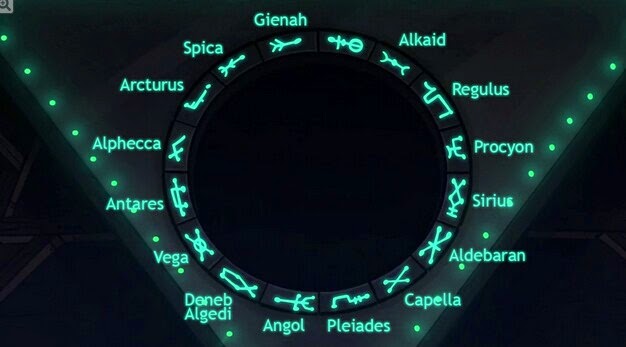
Alphecca was associated with Venus and Mercury, it conveyed honor, dignity, and both poetical and artistic ability. The primary star, Alphecca A, has 258% of our Sun’s mass, its radius is between 289% to 304% of the Sun’s radius, and it is 74 times brighter than our Sun.
Alphecca is also a fast-spinning star, having a rotational velocity of around 139 km / 86.3 mi per second.
This contributes to its circumstellar disk of gas and dust that extends up to 60 AU from the star. The secondary star, Alphecca B, is smaller than our Sun, having only 92% of our Sun’s mass, and 90% of its radius.
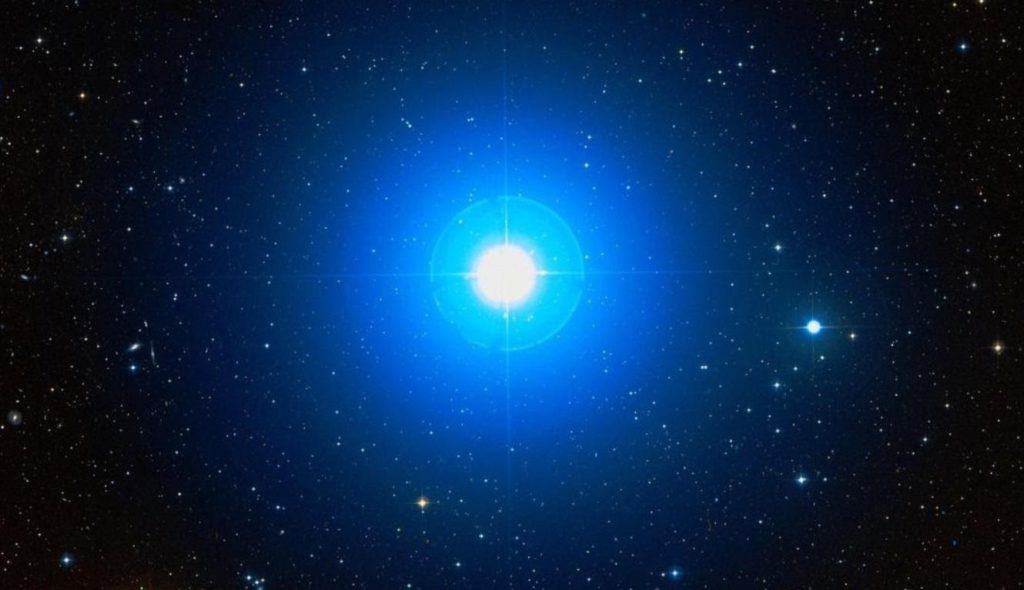
Nusakan
Nusakan, designated as Beta Coronae Borealis, is the second-brightest star in Corona Borealis, and it is also a binary star system having an apparent magnitude that varies from 3.65 to 3.72. Nusakan is located at around 112 light-years away from us.
The two stars in this system are designated as Beta Coronae Borealis A (Nusakan), and B. Beta Coronae Borealis A is a rapidly oscillating Ap star, having 209% of our Sun’s mass, 263% of its radius, and it is 25.3 times brighter.
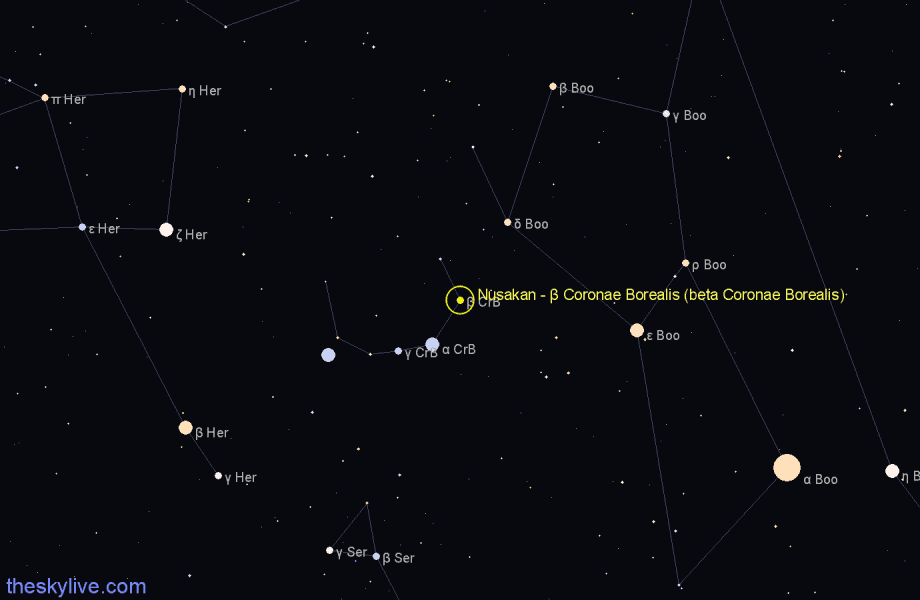
The secondary star, Beta Coronae Borealis B, is a main-sequence star. It has around 140% of our Sun’s mass, 156% of its radius, and it is 4.5 times brighter.
Gamma Coronae Borealis
Gamma Coronae Borealis is a binary star system located at around 146 light-years away from Earth. It has an apparent magnitude of 3.83 that varies from time to time.
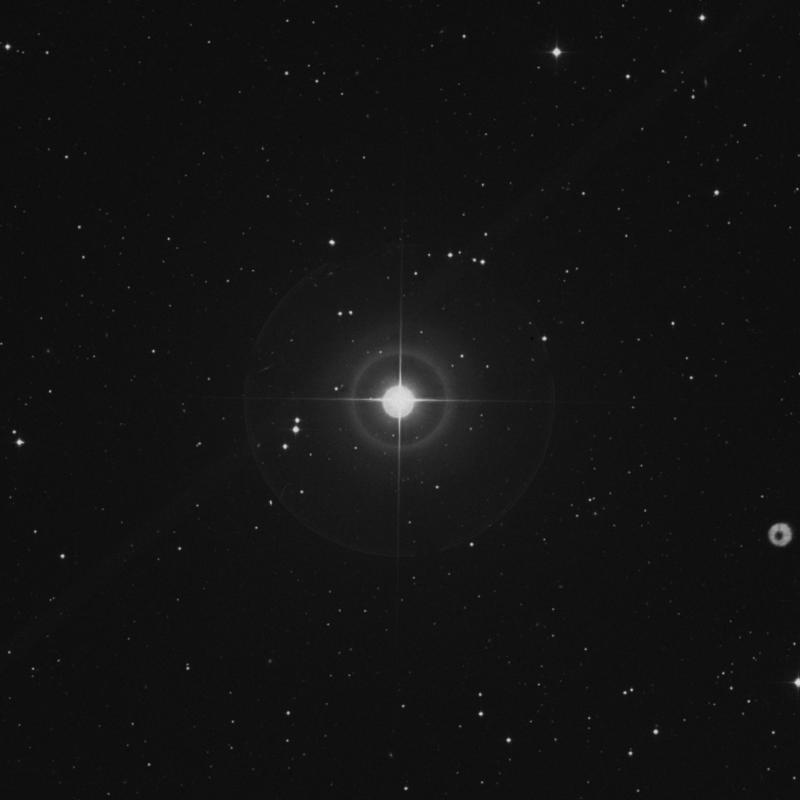
Both of the stars are main-sequence stars, with the primary having around 251% of our Sun’s mass. Its surface temperature is 7,649 K, hotter than our Sun, and it is overall 59 times brighter than our Sun. The primary star is also a fast spinner, having a rotational velocity of 182 km / 113 mi per second.
Theta Coronae Borealis
Theta Coronae Borealis is a binary star located at around 380 light-years away from us, having a combined apparent magnitude of 4.13. The two components are designated as Theta Coronae Borealis A, a blue-white star of magnitude 4.13, and Theta Coronae Borealis B, a white main-sequence star of magnitude 6.29.
Theta Coronae Borealis A is also classified as a Be shell star, since it spins so fastly, at 393 km / 244.1 mi per second, that it is enveloped by a gaseous disk. This star has 600% of our Sun’s mass, 400% of its radius, and it is more than twice as hot, with temperatures recorded at 14,910 K. It is also 538 times brighter than our Sun.
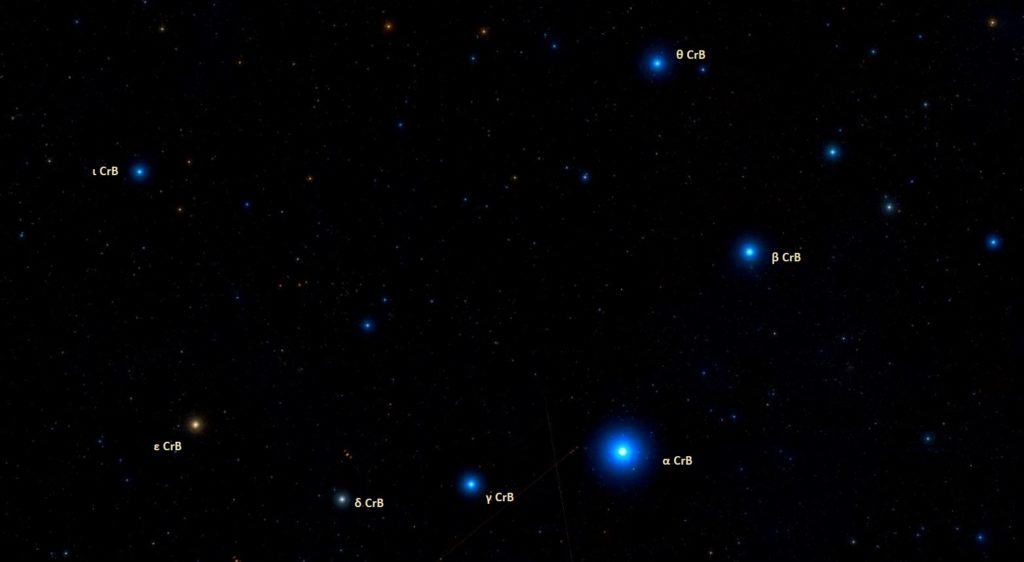
Theta Coronae Borealis B has 250% of our Sun’s mass, and it is located at around 86 AU away from the primary star.
Delta Coronae Borealis
Delta Coronae Borealis is a variable star located at around 165 light-years away from us. Its apparent magnitude varies regularly between magnitude 4.57 and 4.69.
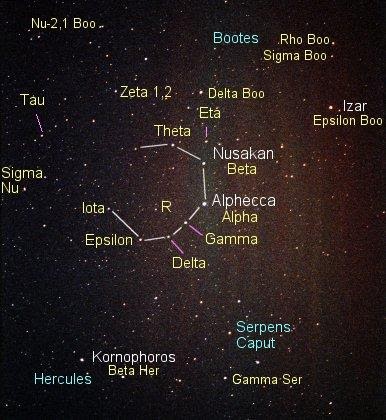
Delta Coronae Borealis is a yellow giant star that has around 240% of our Sun’s mass, 740% of its radius, and it is 34.3 times brighter than our Sun.
Epsilon Coronae Borealis
Epsilon Coronae Borealis is a multiple star system located at around 221 light-years away from us. It has a combined apparent magnitude of 4.13.
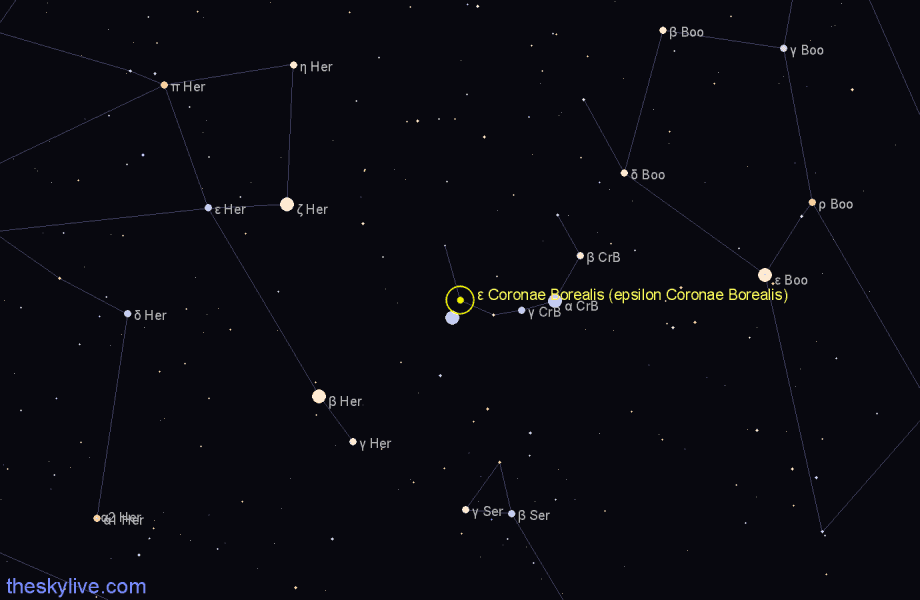
The primary star is an orange giant that has around 144% of our Sun’s mass, 2,100% of its radius, and it is 151 times brighter than our Sun. It also has an exoplanet around 6.7 times as massive as Jupiter orbiting around it at a distance of 1.3 AU. Epsilon Coronae Borealis lies one degree north of the variable star T Coronae Borealis.
Iota Coronae Borealis
Iota Coronae Borealis is a binary star located at around 312 light-years away from us. It has an apparent magnitude of 4.96. The two components of this system are a chemically peculiar mercury-manganese star and an A-type Star.
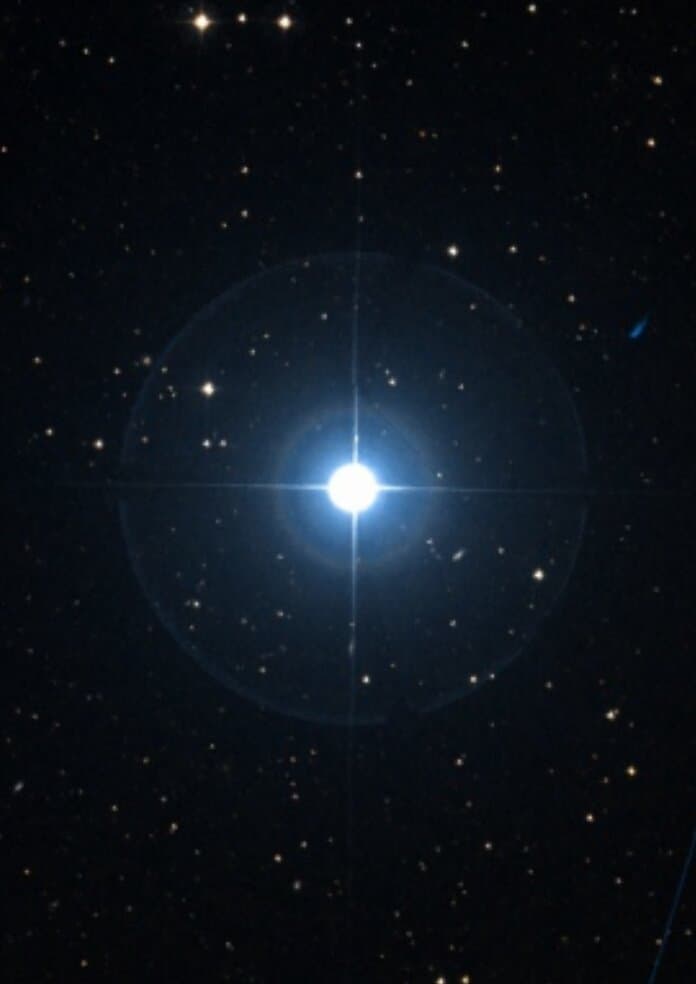
The primary star is the chemically peculiar one, and it is 90 times brighter than our Sun, and almost twice as hot, with temperatures recorded at around 10,727 K.
T Coronae Borealis
T Coronae Borealis, also known as the Blaze star, is an unusual type of star known as a recurrent nova. It usually has an apparent magnitude of 10.8, but during an outburst, it reaches a magnitude of 2.0.
T Coronae Borealis is located at around 806 parsecs away from us, and it is also a binary star system, composed out of a red giant star and a white dwarf.
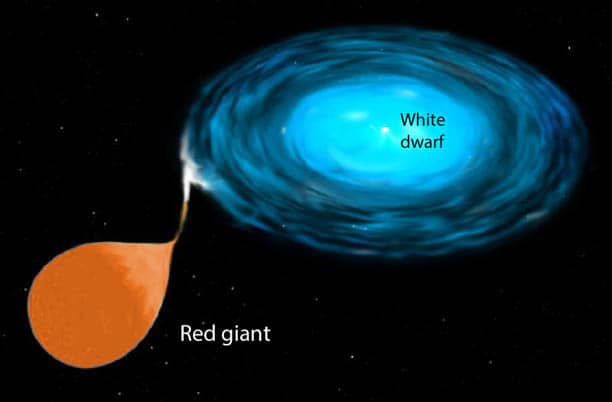
The red giant star has 112% of our Sun’s mass, 7,500% of its radius, and it is 655 times brighter than our Sun. The white dwarf has 137% of our Sun’s mass and it is around 100 times brighter.
Rho Coronae Borealis
Rho Coronae Borealis is a yellow dwarf star, very similar to our Sun. It has an apparent magnitude of 5.4, and it is located at around 56.2 light-years away from us.
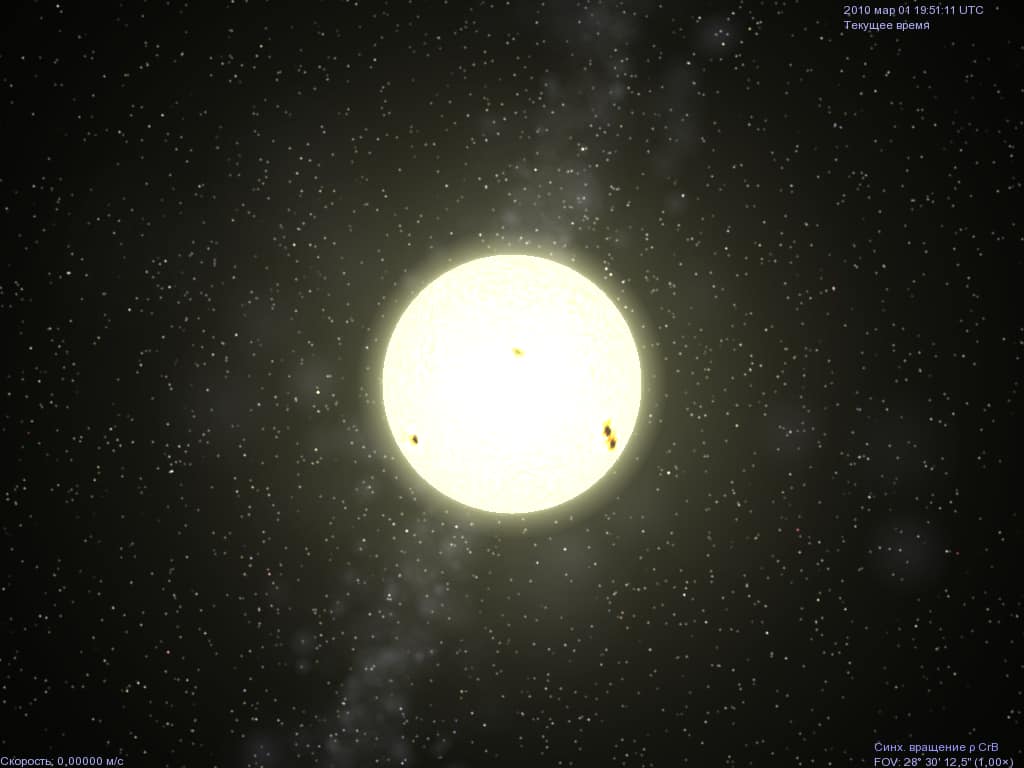
Rho Coronae Borealis is older than our Sun, being 10.2 billion years old. It has around 91% of our Sun’s mass, 136% of its radius, and it is 1.7 times brighter than our Sun.
R Coronae Borealis
R Coronae Borealis is a yellow supergiant star, being the prototype of the R Cor Bor class of variable stars, which fade by several magnitudes at irregular intervals. This supergiant is located at around 1,400 parsecs, and it has an apparent magnitude that varies from 5.71 to 14.8.
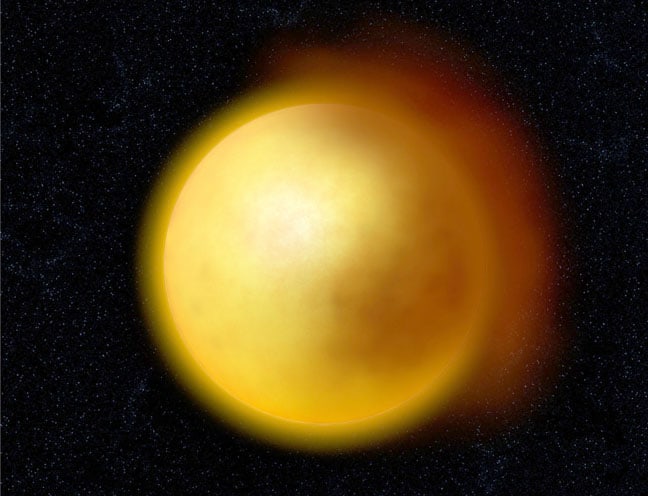
R Coronae Borealis has only 80% of our Sun’s mass and around 8,500% of its radius. It is around 10,000 times brighter than our Sun. This star is made up of around 90% helium and less than 1% hydrogen, with the majority of the remainder being carbon.
Kappa Coronae Borealis
Kappa Coronae Borealis is a K-type orange subgiant star located at around 98.1 light-years away from us. It has an apparent magnitude of +4.79.
This star is the first subgiant discovered to host a disk of dust around it. The disk extends out to around 120 AU. A giant planet orbits Kappa Coronae Borealis, however further observations are needed to establish its nature.
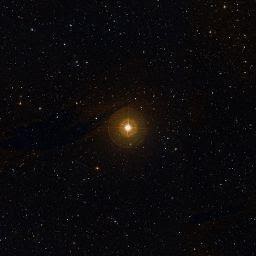
Kappa Coronae Borealis has around 132% of our Sun’s mass, 477% of its radius, and it is 11.6 times brighter than our Sun. This star is cooler than our Sun, having temperatures of around 4,870 K.
Deep-sky Objects
The constellation of Corona Borealis hosts many interesting deep-sky objects as well, such as the Abell 2065 galaxy cluster, the Corona Borealis Supercluster, the NGC 6085, and 6086 spiral and elliptical galaxies, or the Abell 2142, 2061, 2067 and 2162 galaxy clusters, among others.
There are no Messier objects in Corona Borealis, and no meteor showers are associated with this constellation.
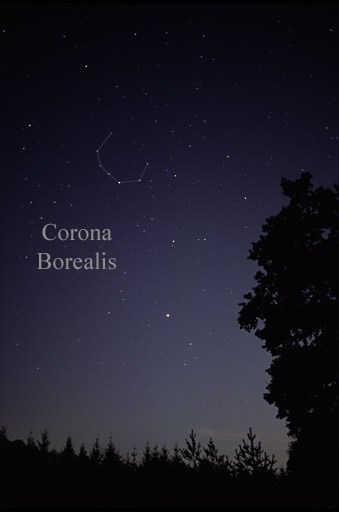
NGC 6085
NGC 6085 is a spiral galaxy, and it is a member of the Abell 2162 galaxy cluster. It has an apparent magnitude of 14.5, and it is located at around 454 million light-years away from us. This galaxy stretches for around 226,700 light-years, being much bigger than our Milky Way.
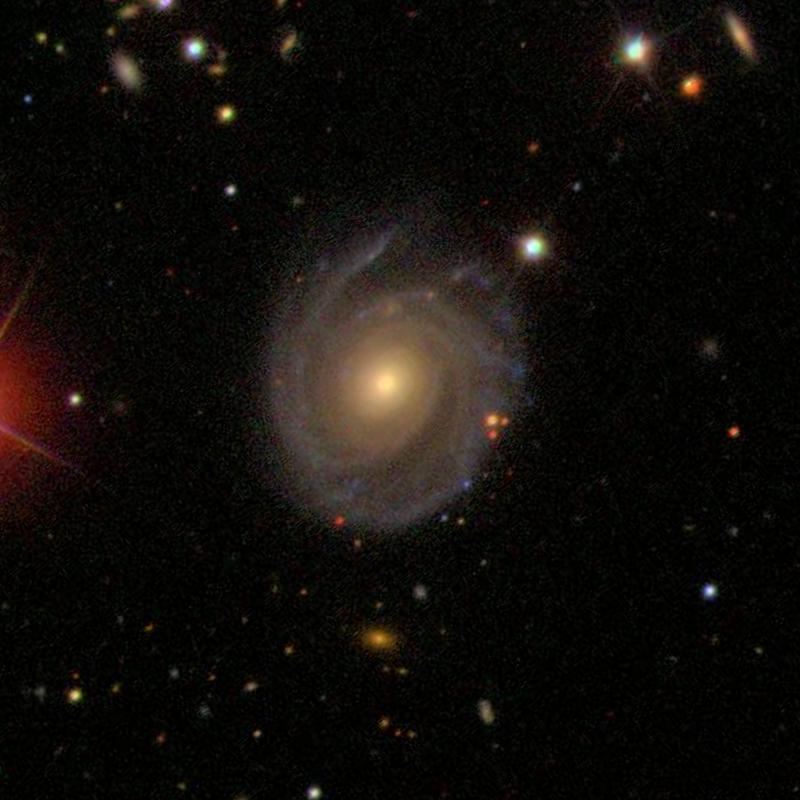
NGC 6086
NGC 6086 is an elliptical galaxy, being the brightest galaxy in the Abell 2162 galaxy cluster. This galaxy has an apparent magnitude of 12.7, and a supermassive black hole has discovered in it.
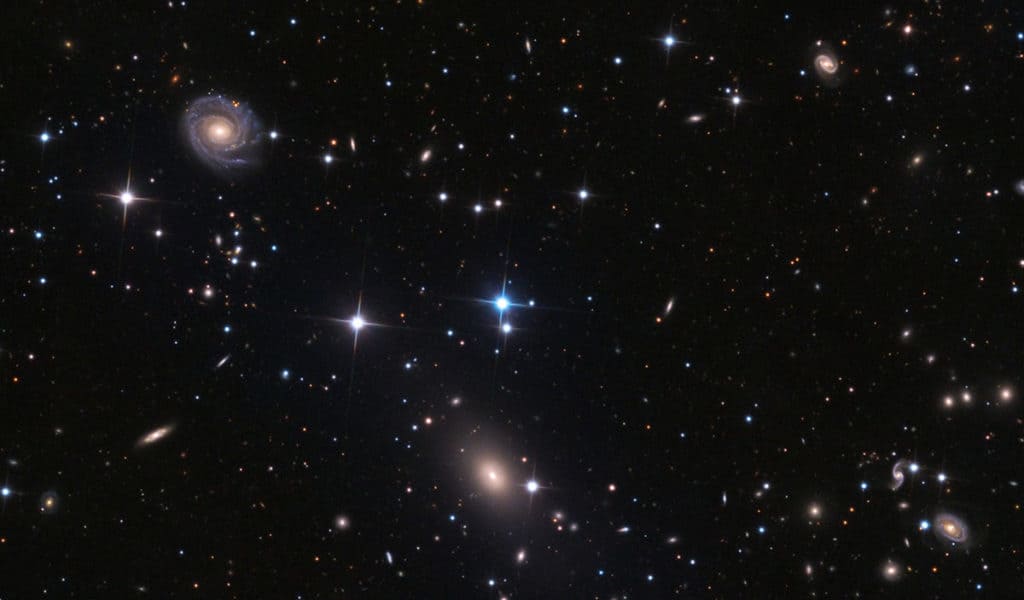
Abell 2142
Abell 2142 is a huge X-ray luminous galaxy cluster, being the result of a still ongoing merger between two galaxy clusters. This cluster stretches for around six million light-years, and it contains hundreds of galaxies and enough galaxies to make thousands more.
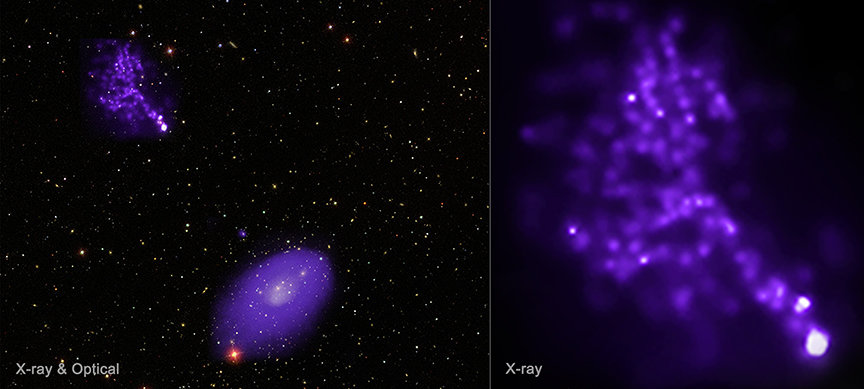
Abell 2065
Abell 2065 is a highly concentrated galaxy cluster containing over 400 galaxies, located at around one billion light-years away from our Solar System.
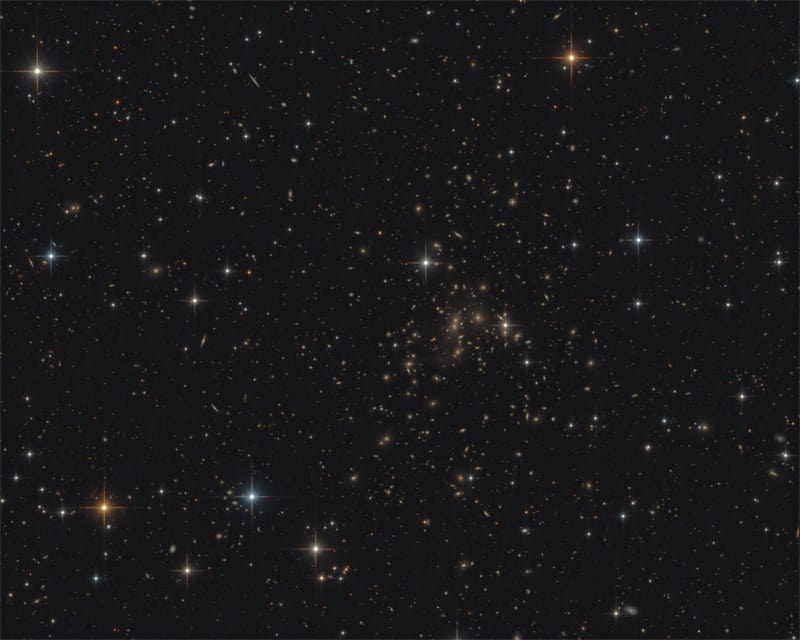
Corona Borealis Supercluster
The Corona Borealis Supercluster is a supercluster and the most prominent example of its kind in the northern celestial hemisphere. This galaxy contains the galaxy clusters Abell 2056, 2061, 2065, 2067, 2079, 2089, and 2092.
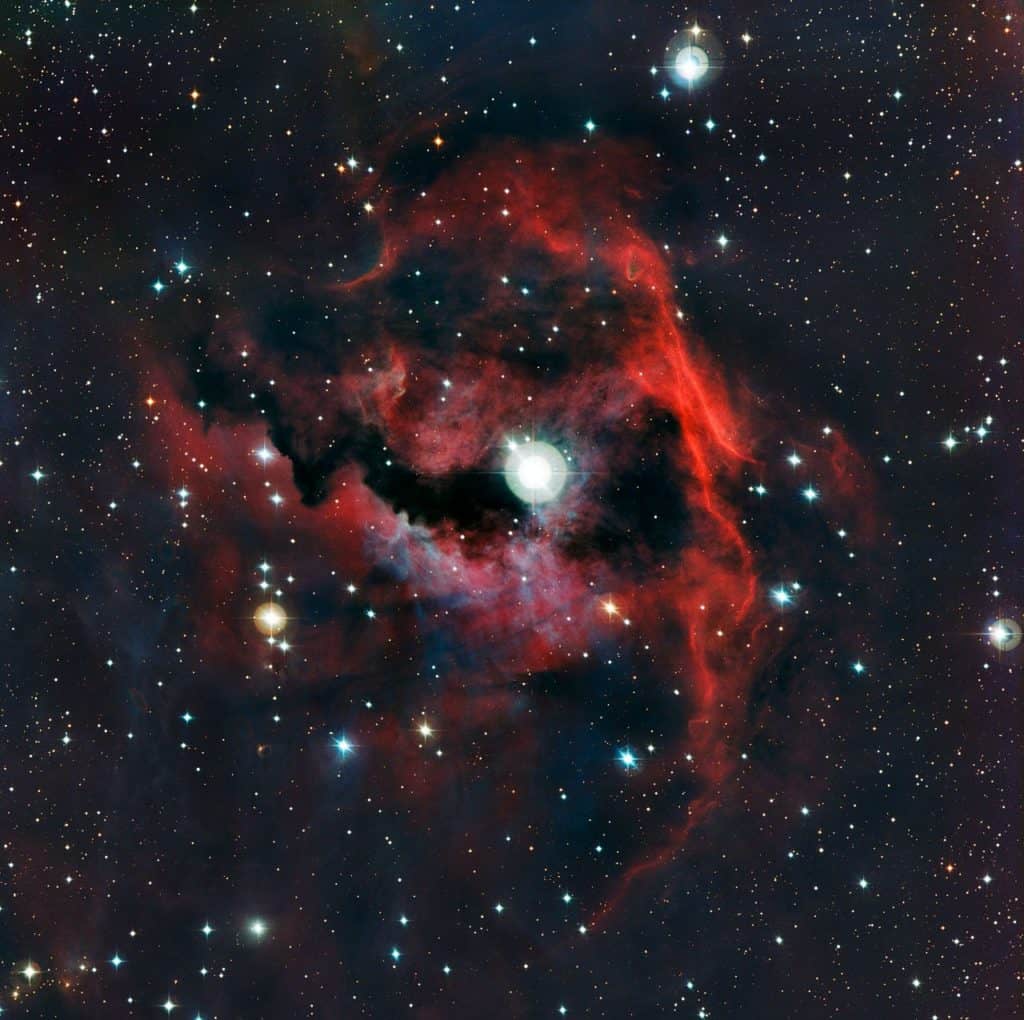
The Corona Borealis Supercluster is 330 million light-years wide and 130 million light-years deep, and it is located at around 964 million light-years away from us.

Did you know?
- In Welsh mythology, Corona Borealis was called Caer Aarinhod – the Castle of the Silver Circle – and was the heavenly abode of the Lady Arianrhod.
- The ancient Balts knew Corona Borealis as Darzelis – the flower garden.
- The Arabs called Corona Borealis – Alphecca – now its brightest star bears this name. Alphecca means “separated”.
- The Skidi people of Native Americans saw the stars of Corona Borealis as representing a council of stars whose chief was Polaris.
- In Australian Aboriginal astronomy, the constellation is called womera – the boomerang – due to the shape of the stars.
Sources:
Image Sources:
- https://i0.wp.com/astrobob.areavoices.com/files/2020/03/Corona-Borealis-with-Arcturus_ANNO_S3_FEA.jpg?fit=936%2C410&ssl=1
- https://upload.wikimedia.org/wikipedia/commons/thumb/f/f1/Sidney_Hall_-_Urania%27s_Mirror_-_Hercules_and_Corona_Borealis.jpg/640px-Sidney_Hall_-_Urania%27s_Mirror_-_Hercules_and_Corona_Borealis.jpg
- https://upload.wikimedia.org/wikipedia/commons/thumb/5/50/Corona_Borealis_with_Chinese_Asterisms_and_Mansions.svg/769px-Corona_Borealis_with_Chinese_Asterisms_and_Mansions.svg.png
- https://astrologyking.com/wp-content/uploads/corona-borealis-constellation.jpg
- https://www.constellation-guide.com/wp-content/uploads/2019/03/July-constellations.jpg
- https://www.constellationsofwords.com/images/stars/Alphecca.JPG
- https://cayelincastell.com/wp-content/uploads/2017/10/behenian-star-glyphs.jpg
- https://www.star-facts.com/wp-content/uploads/2020/07/Alphecca.jpg?189db0&189db0
- https://theskylive.com/sky/stars/finder-charts/nusakan-beta-coronae-borealis-finder-chart.png?c=1586760885
- https://theskylive.com/sky/stars/star-images/58/5849_800.jpg
- https://www.star-facts.com/wp-content/uploads/2020/07/Corona-Borealis-stars.jpg?189db0&189db0
- https://lh3.googleusercontent.com/proxy/kNLJnnViUHCLH0Pejd53XktPQF-758ByaGSpww7DI62fkrzc7kI__o-5NibyIjos1SLHzmdSj4J05N_YEz7aCWBrFJUA
- https://theskylive.com/sky/stars/finder-charts/epsilon-coronae-borealis-finder-chart.png?c=1586851416
- https://pbs.twimg.com/media/DJc7sc5XkAErw3g.jpg
- https://skyandtelescope.org/wp-content/uploads/T-CrB-NASA-Accretion_Disk_Binary_System_ST.jpg
- https://upload.wikimedia.org/wikipedia/commons/b/bd/Star_Rho_Coronae_Borealis.jpeg
- https://skyandtelescope.org/wp-content/uploads/R-CrB-ESO-with-dust-cloudS1.jpg
- https://lh3.googleusercontent.com/proxy/WXv8LctMmNVc2m_BR9P_PbvwISZYb45oNP05ccJztHyS6JgmlfhEFO_vOaSfwVO9vfcZcgD3-V7Ve8Mqmn7hpMSJa0TD7xq5aVf7I17BAJ4Lu1IG_Gun51Cr7CUhhmxQDyHgeX3yN0dzDQ
- https://www.ouruniverseforkids.com/wp-content/uploads/2018/06/CoronaBorealisCC.jpg
- https://upload.wikimedia.org/wikipedia/commons/b/b4/NGC_6085_color_cutout_rings.v3.skycell.1983.031.stk.3625459.3866063.3804496.unconv.fits_sci.jpg
- https://upload.wikimedia.org/wikipedia/commons/thumb/c/c1/N6085s.jpg/1200px-N6085s.jpg
- https://chandra.harvard.edu/photo/2018/a2142/a2142.jpg
- http://www.astrophoton.com/images/abell2065-1.jpg
- https://i.pinimg.com/originals/01/80/fe/0180fe9fac899c1cd5a8cff658191083.jpg
- https://lh3.googleusercontent.com/proxy/9OQnqHZPm-SdaPb3hj3Z-o3JLUUKi8rpPwbWo8fuiN3UwQw5xKKQ9s-92eyBd1U9JsH3oDch9jDxpMReIOjXvJp2MkHsUBYu
